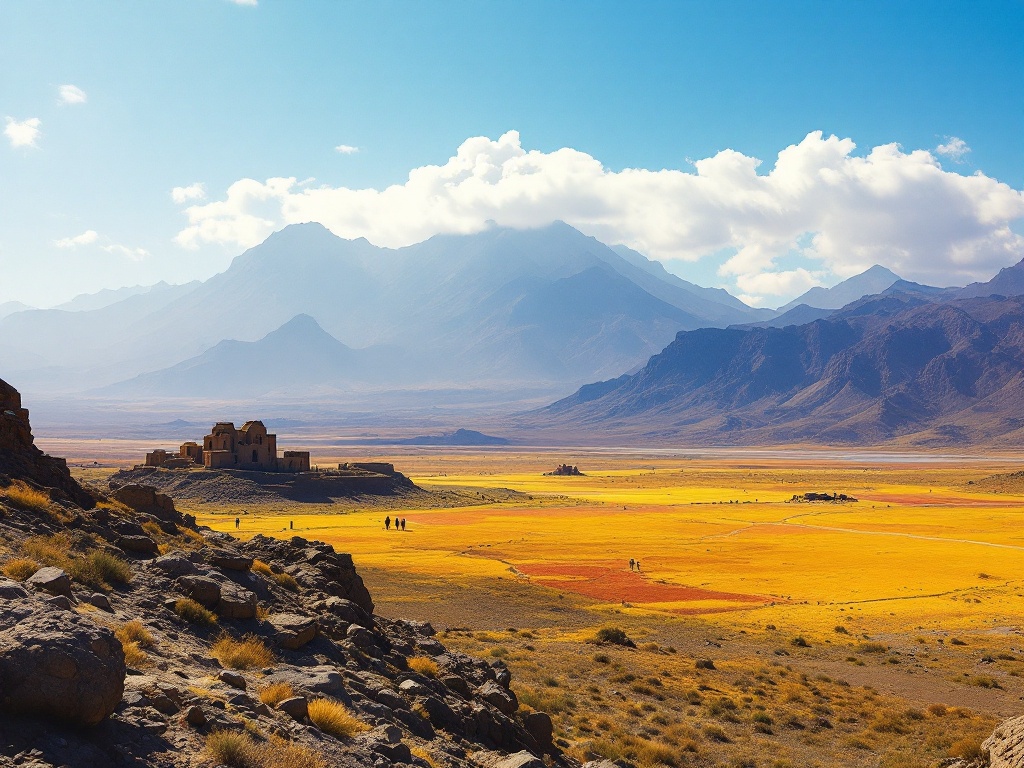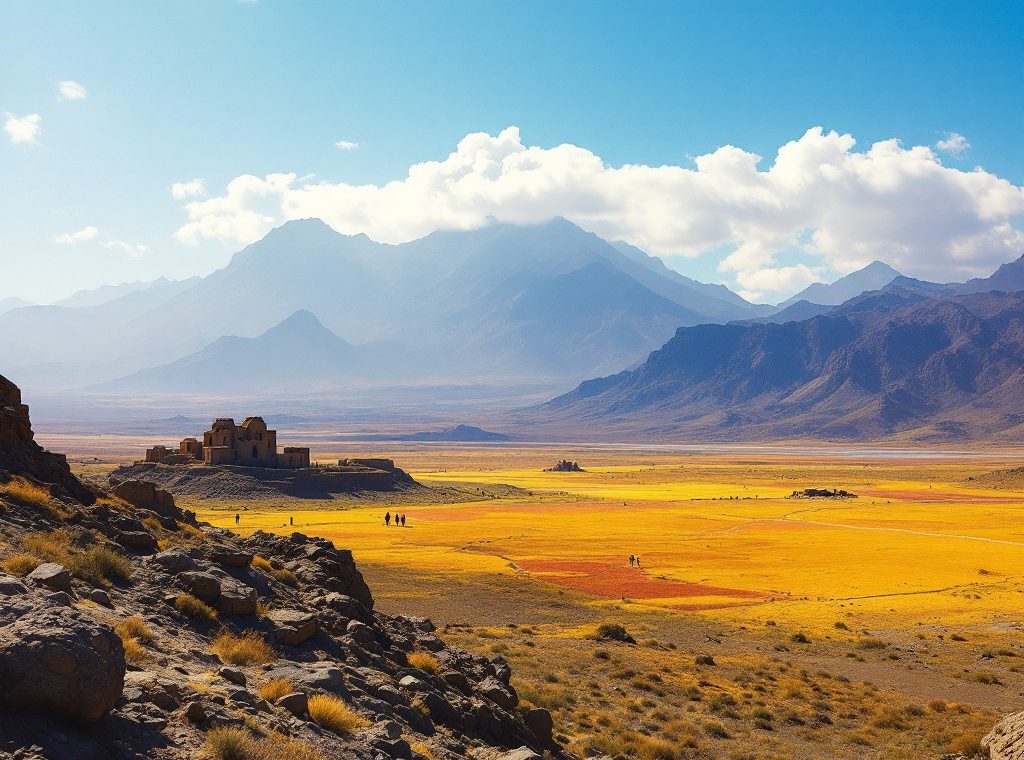Ethiopia for Nature Lovers: Travel Tips and Visa Info
Dreaming of exploring Ethiopia’s ancient wonders and breathtaking landscapes? Discover the Simien Mountains, Danakil Depression, and nine UNESCO World Heritage sites. This comprehensive guide simplifies the visa process, highlighting the easy e-visa system and visa-on-arrival option. Learn about the ideal dry season for trekking, essential safety tips, and transportation advice. Plan your unforgettable Ethiopian adventure today!
Important information

- Most visitors need a visa. Apply for an e-visa online or get one upon arrival at Addis Ababa Bole International Airport.
- Passports must be valid for six months beyond your travel dates. Check the latest visa rules before your trip as they can change.
- The dry season (October to June) is best for nature and adventure, with ideal trekking in the Simien and Bale Mountains.
- Consult your doctor about needed vaccines, including yellow fever, and pack a first-aid kit.
- Book accommodations in advance, especially outside Addis Ababa, as availability can be limited.
Visa Requirements and Application Process for Ethiopia
Planning a trip to Ethiopia? Most travelers, including Americans, need a visa. The good news is that the process is typically quick, with approval usually granted within one to three business days using their convenient online e-visa system. Many nationalities can also obtain a visa upon arrival at Addis Ababa Bole International Airport. Remember, your passport must be valid for at least six months beyond your travel dates. Since visa regulations can change, it’s always best to verify the latest requirements for your nationality before you depart. For more information on eVisa requirements, please visit eVisa Ethiopia.
Do You Need a Visa to Visit Ethiopia?
Planning a trip to Ethiopia? Most travelers, including Americans, need a visa. You can obtain one upon arrival or apply for an e-visa online.
Ethiopia eVisa Process and Benefits
Obtain your Ethiopian eVisa online with ease. It’s valid for a single 30-day trip and simplifies travel arrangements. This digital visa allows you to bypass the visa-on-arrival process or a visit to the embassy.
Required Documents for Your Ethiopia Visa Application
Ensure your passport’s validity extends at least six months beyond your arrival date.
You’ll also likely need a return ticket and accommodation confirmation.
Visa requirements differ depending on your citizenship; some nationalities need them, others don’t.
Checking the latest visa regulations before traveling is crucial to prevent potential problems.
Visa on Arrival: Is It an Option?
Some nationalities can obtain a visa upon arrival at Addis Ababa’s Bole International Airport (ADD). However, it is highly recommended to confirm your eligibility and required documents with the Ethiopian embassy or consulate in your home country before your trip, as visa regulations and requirements are subject to change. This will ensure a smooth arrival experience in Ethiopia.
Best Time to Visit Ethiopia for Nature and Adventure
Ethiopia’s dry season, spanning from October to June, is the perfect time for nature lovers and adventurers. This period offers ideal trekking conditions and incredible wildlife viewing opportunities, especially in accessible areas like the Simien and Bale Mountains. The dry season also boasts clear skies and comfortable temperatures, ideal for exploring Ethiopia’s diverse landscapes.
Exploring Ethiopia During the Dry Season
Ethiopia’s dry season, from October to April, is the perfect time to explore its stunning landscapes. The pleasant weather and clear skies are ideal for outdoor activities like trekking and wildlife viewing. The Simien and Bale Mountains are easily accessible during this dry period. For the best Simien Mountains hiking experience, visit between November and February for optimal conditions.
Top Natural and Cultural Attractions in Ethiopia
Explore Ethiopia’s dramatic landscapes and unique wildlife in the Simien Mountains National Park, a UNESCO World Heritage site. Hike amongst Gelada baboons, Walia ibex, and the elusive Ethiopian wolf. Venture into the Danakil Depression, one of Earth’s hottest and lowest points. Witness its surreal beauty, from vibrant sulfur springs and vast salt flats to the fiery spectacle of active volcanoes like Erta Ale. Discover Ethiopia’s rich history and ancient wonders, home to nine UNESCO World Heritage Sites. Explore the rock-hewn churches of Lalibela, the majestic Fasil Ghebbi fortress in Gondar, and the historical city of Aksum. Journey back in time at the Lower Valley of the Awash.
Experience the Simien Mountains and Wildlife Spotting
Embark on an Ethiopian adventure through its stunning national parks.
Begin in the Simien Mountains National Park, a UNESCO World Heritage site. Hike dramatic landscapes and encounter unique wildlife like the Gelada baboon and Walia ibex.
Journey next to Bale Mountains National Park, a haven for diverse ecosystems and home to the rare Ethiopian wolf, where scenic treks await.
For a truly unforgettable experience, descend into the Danakil Depression. Explore a surreal landscape of colorful mineral deposits, active volcanoes, and vast salt flats.
Finally, explore the Great Rift Valley, with its breathtaking beauty and beautiful lakes teeming with birdlife.
The Breathtaking Danakil Depression
The Danakil Depression, one of Earth’s hottest and lowest locales, presents a scorching landscape. It is painted with vivid hydrothermal vents and stark white salt flats. This extreme environment is renowned for its unique geology, yet possesses an undeniable beauty.
Must-Visit UNESCO World Heritage Sites
Ethiopia is a land of ancient wonders, boasting nine UNESCO World Heritage Sites. Explore the rock-hewn churches of Lalibela, carved directly into the mountainside. Discover the breathtaking Simien National Park, home to unique wildlife and dramatic landscapes. Journey through the magnificent Fasil Ghebbi, a royal enclosure filled with palaces and castles. Uncover the mysteries of the ancient stelae fields at Tiya and Aksum. Delve into the anthropological treasures of the Lower Valley of the Awash and the Lower Valley of the Omo. Experience the walled city of Harar Jugol, a unique blend of cultures. Finally, immerse yourself in the fascinating Konso Cultural Landscape, with its terraced hillsides and fortified villages. These nine sites offer an unforgettable glimpse into Ethiopia’s rich and diverse heritage.
Adventure Travel and Outdoor Activities in Ethiopia
Trekking through Ethiopia’s highlands offers an unforgettable experience, particularly in the spectacular Simien Mountains National Park, a UNESCO World Heritage site. Witness dramatic landscapes and unique wildlife, including the Ethiopian wolf and the Walia ibex. Local guides are recommended for both safety and insights into the region’s flora and fauna, whether you are an experienced hiker seeking a challenging multi-day trek or prefer a shorter, gentler trail.
Explore the Bale Mountains National Park with its distinctive Afro-alpine ecosystem, also home to the Ethiopian wolf and a variety of bird species. For a truly enriching experience, consider a guided tour to gain valuable knowledge about the animals and their habitats.
Ethiopia’s national parks teem with diverse wildlife. The Simien Mountains are renowned for endemic species like the Gelada baboon and Walia ibex.
In the Bale Mountains, you might encounter the elusive Ethiopian wolf, the world’s rarest canid. Other parks, such as Awash and Nechisar National Parks, boast diverse wildlife including lions, zebras, and abundant birdlife.
Trekking and Hiking in Ethiopia’s Highlands
Trekking in the Ethiopian highlands offers an incredible adventure with breathtaking views and diverse landscapes. However, the rugged terrain and high altitude present a challenging but rewarding experience. Thorough preparation is key to a successful adventure. Consider these essential tips:
Wildlife Spotting in Ethiopia’s National Parks
Ethiopia’s national parks are a wildlife enthusiast’s dream. They offer glimpses of creatures found nowhere else on Earth, like the Ethiopian wolf, Gelada baboon, and Walia ibex. Birdwatchers will also delight in the over 800 avian species that call Ethiopia home. For incredible biodiversity and stunning vistas, Bale Mountains National Park is a must-see. Simien Mountains National Park is equally impressive, with its dramatic landscapes and unique fauna. Both parks promise unforgettable experiences for nature lovers.
Transportation and Accommodation in Ethiopia
Getting around Ethiopia offers several public transport options. Buses and minibuses are commonly used for travel within cities and longer distances. Bajaj (three-wheeled vehicles) are readily available for shorter trips within urban areas. Domestic flights connect major cities such as Addis Ababa, Gondar, and Lalibela. However, be aware that road travel can be lengthy due to road conditions and limited infrastructure.
Traveling Around Ethiopia by Public Transportation
Traveling in Ethiopia can be tricky, especially when it comes to public transport. Unregulated transportation options are risky and best avoided. For a safer trip, consider these options:
- Hire a local guide: a guide who knows the area can help you navigate safely and efficiently.
- Choose a reputable tour operator: established companies offer a more reliable and secure travel experience.
Accommodation: Where to Stay Beyond Addis Ababa
Securing accommodations outside Addis Ababa can be challenging due to limited availability. Therefore, booking in advance is crucial, especially outside the capital, to ensure a smoother trip.
Travel and Safety Tips for Visiting Ethiopia
Prioritize safety when planning your Ethiopian adventure. Consult your doctor about recommended vaccinations, such as typhoid and hepatitis A, and ensure your routine vaccinations are up-to-date. Pack prescription medications, a basic first-aid kit, and secure travel insurance that covers medical emergencies and evacuations.
Travel Safety and Health Precautions
Before your trip to Ethiopia, consult your doctor about recommended vaccinations and necessary medications. Pack a comprehensive first-aid kit with essential supplies. For protection against the sun and insects, remember sunscreen, insect repellent, and a hat. If your travels include the Ethiopian Highlands, be mindful of altitude sickness and carry any prescribed medication. Acclimatize gradually and stay hydrated by drinking bottled water. Avoid tap water to prevent illness. Be cautious about food; stick to well-cooked meals and avoid raw or undercooked options to maintain your health.
Safety Measures: Avoiding Civil Unrest and Natural Disasters
Stay informed about potential safety risks by checking local news and government advisories. Upon arrival, register with your embassy or consulate for updates and assistance. Ethiopia is vulnerable to natural disasters, such as droughts and floods, so pay attention to weather forecasts and heed warnings from local authorities. Be prepared for any eventuality. Here’s a helpful checklist for staying safe:
Health Precautions: Vaccinations and Yellow Fever
Before traveling to Ethiopia, consult your doctor or a travel health clinic about recommended vaccinations. Pay particular attention to the yellow fever vaccine, especially if you are arriving from a high-risk country.











